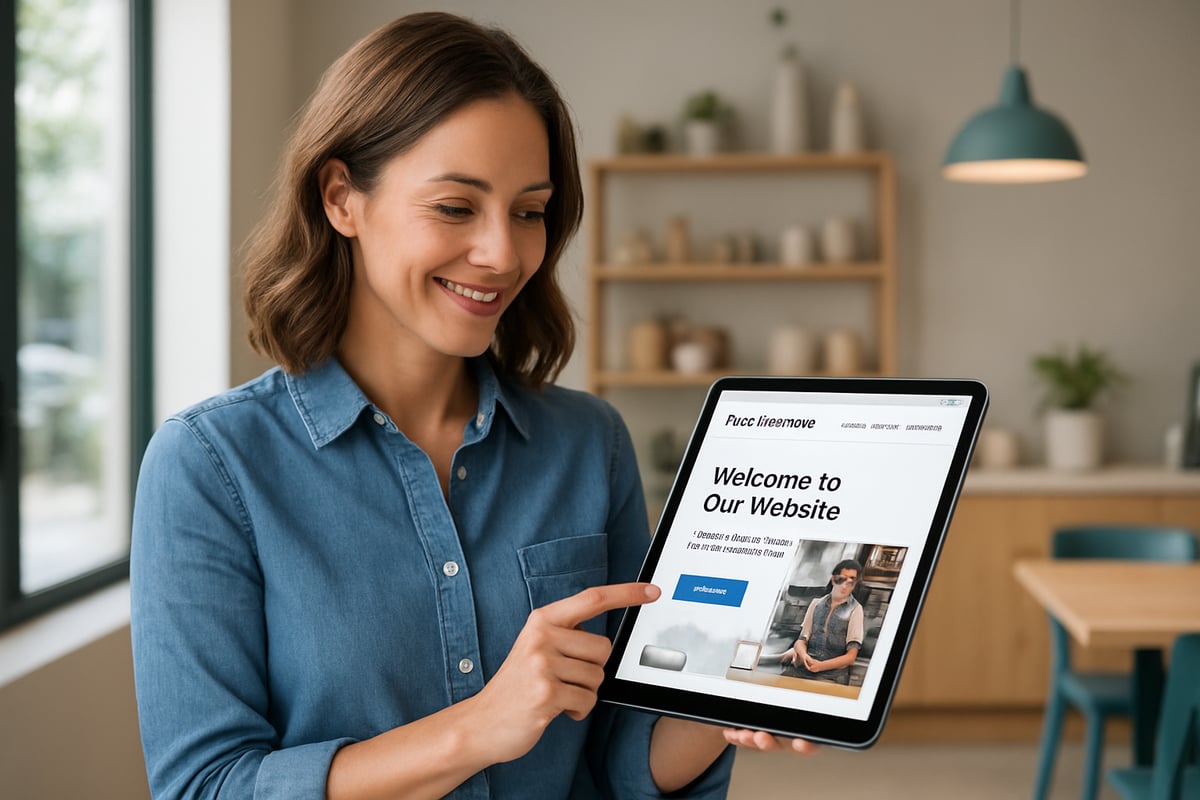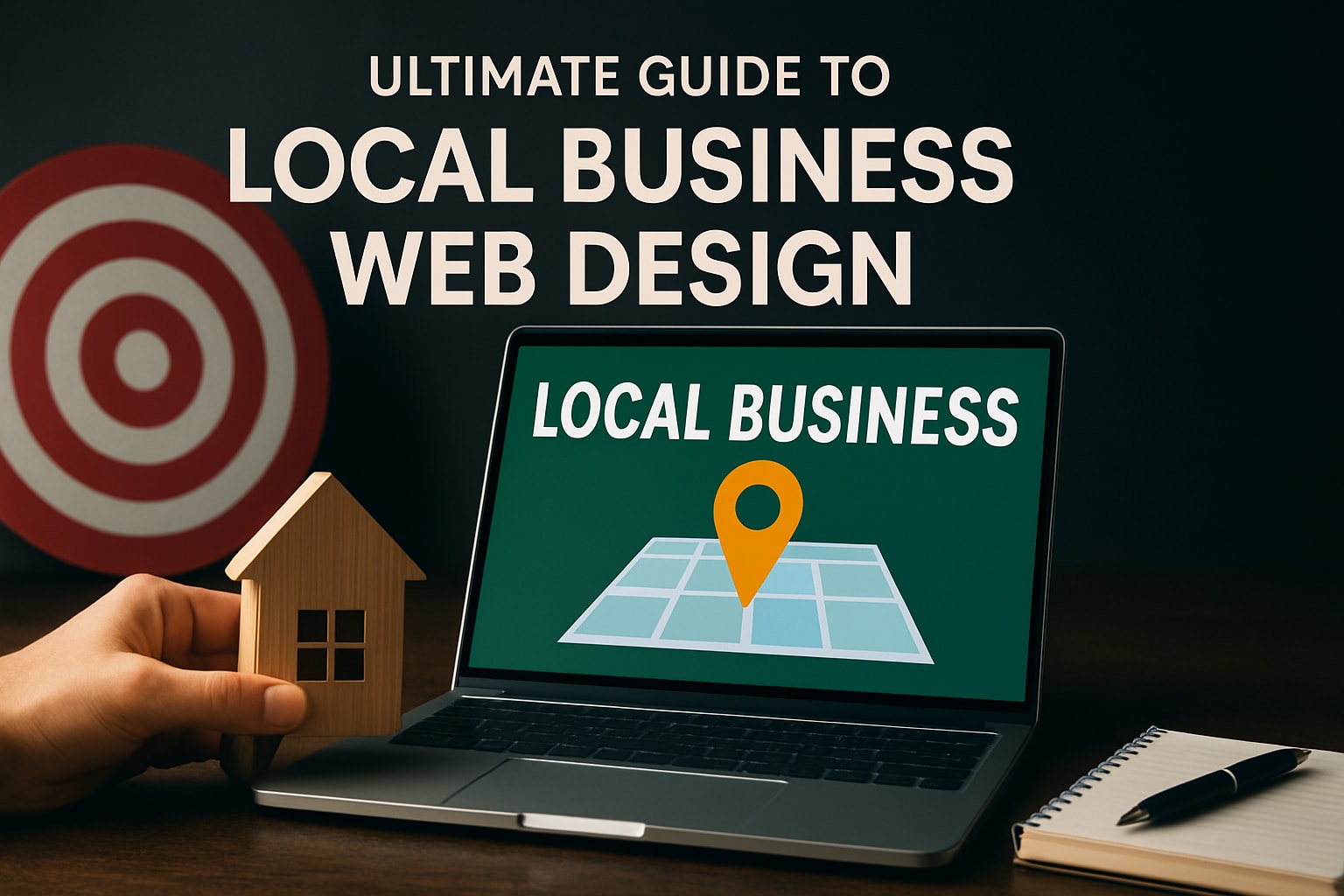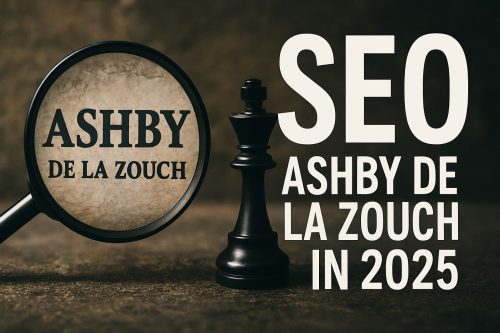In 2025, your local business website isn’t just a digital business card—it’s your most powerful tool for attracting and converting local customers. The landscape of local business web design is evolving rapidly, and staying ahead is crucial for lasting success.
This guide will help you understand the latest trends, must-have features, and proven strategies to make your website stand out. Whether you’re a business owner, marketer, or entrepreneur, you’ll discover actionable steps for creating a high-performing, future-ready site.
Ready to transform your online presence and drive real results? Let’s get started.
Why Local Business Web Design Matters in 2025
In 2025, the way people find and choose local businesses is more connected to the web than ever before. Most consumers now start their search for services online, seeking quick, reliable information. As customer expectations evolve, they demand websites that are fast, visually appealing, and easy to use. For any business, the first impression often comes from its website, making local business web design a crucial factor for growth.

The Evolving Digital Landscape
The digital habits of local customers have shifted rapidly. Over 90 percent of consumers now use the internet to find businesses in their area. This trend accelerated after the pandemic, as people grew accustomed to researching, booking, and buying online. Today, users expect local business web design to deliver seamless browsing, quick access to information, and a trustworthy digital presence. Meeting these expectations is essential for attracting and retaining local customers.
The Competitive Edge of Great Web Design
A modern, high-quality website does more than just look good. It builds trust, encourages visitors to take action, and sets a business apart from competitors. Local businesses with strong local business web design see higher conversion rates and increased customer loyalty. For example, some independent retailers have reported measurable sales growth after investing in a website redesign that prioritises user experience and visual appeal.
The Cost of Poor Web Design
On the flip side, an outdated or poorly designed site can quickly drive potential customers away. Slow load times, confusing navigation, or an unprofessional look often lead visitors to choose a competitor. Poor local business web design also negatively affects search rankings, making it harder for customers to find you online. Missing trust signals, such as HTTPS security and clear contact details, increase bounce rates and damage credibility.
Local SEO and Visibility
Effective local business web design is closely tied to online visibility. Google prioritises well-optimised local sites in its local pack, map results, and “near me” searches. In fact, Local SEO Statistics 2025 reveals that 46 percent of all Google searches are for local information. By focusing on SEO best practices, businesses can ensure their websites appear where local customers are searching.
Building Lasting Customer Relationships
Consistent branding and a smooth online experience help foster lasting relationships with customers. Personalised content and community-focused pages encourage repeat visits and engagement. Local business web design that reflects a business’s values and personality makes customers feel connected and valued.
Key Arguments & Insights
In 2025, local business web design is not just a marketing tool; it is the foundation of a business’s reputation and success. A well-designed website operates as a 24 7 sales representative, building trust and driving growth in the local market.
Essential Elements of High-Converting Local Business Websites
A high-performing local business web design is more than attractive visuals. It is a strategic mix of usability, credibility, and functionality, all tailored to local needs. Let us explore the must-have elements that make a website truly effective in 2025.

User Experience (UX) and User Interface (UI) Best Practices
For local business web design, seamless navigation and clear calls-to-action are essential. Visitors should find what they need within seconds. Fast load times are critical, as studies show over half of users leave if a site is slow.
Design must be visually balanced, using consistent brand colours and readable fonts. Accessibility is also vital. Features like alt text, proper contrast, and keyboard navigation ensure the site works for everyone.
A real-world example: a Leicestershire café improved bookings by 30% after enhancing UX. For a detailed breakdown of effective features, see the essential qualities of an effective website. These practices directly impact customer satisfaction and business outcomes.
Mobile-First & Responsive Design
Today, more than 60% of local searches happen on mobile devices. Local business web design must prioritise mobile-first layouts that adapt fluidly to all screens. A responsive site not only pleases visitors but also complies with Google’s mobile-first indexing, which affects local rankings.
Modern users expect the same quality on mobiles as desktops. Responsive grids, scalable images, and touch-friendly menus are now non-negotiable. This approach boosts both engagement and conversion rates.
Trust and Credibility Builders
Trust is the foundation of any successful local business web design. Secure HTTPS protocols, GDPR compliance, and clear privacy policies reassure visitors. Displaying your business address, phone number, and contact forms prominently builds immediate confidence.
Social proof, such as customer testimonials and reviews, is powerful. For instance, adding a Google Reviews widget to the homepage often increases enquiry rates. Trust signals should be visible on every key page to reduce bounce rates and enhance credibility.
Local SEO Integration
Visibility in local search is crucial for local business web design. Maintaining NAP (Name, Address, Phone) consistency across your website and directories is fundamental. Schema markup helps search engines recognise your business type and location.
Embedding Google Maps and optimising for “near me” searches improves your chances of appearing in Google’s local pack. This integration ensures your business is found by customers precisely when they are searching for your services.
Conversion Optimisation Features
A high-converting local business web design includes forms for bookings, quotes, or live chat, making it easy for visitors to take action. Lead magnets such as downloadable guides or newsletter signups encourage engagement.
Case in point: a local trades business saw twice as many leads after adding a quick quote form. Every interactive feature should guide the user towards a clear next step, supporting business objectives.
Content That Connects
Locally relevant, keyword-optimised content is at the heart of successful local business web design. Service area pages, local news, and event updates help you stand out.
High-quality photos of your staff, premises, and products build a genuine connection. Clear value propositions and unique selling points highlight what sets your business apart. Strong content turns visitors into loyal customers.
Social Media and Third-Party Integration
Social proof and community engagement are vital for local business web design. Integrate Instagram feeds, Facebook reviews, and share buttons to showcase activity and trust.
Easy access to your social channels encourages ongoing interaction. Embedding these elements shows your business is active, responsive, and part of the local community.
Step-by-Step Guide: Designing a Local Business Website in 2025
Creating a high-performing local business web design in 2025 requires a structured and strategic approach. This step-by-step guide will walk you through every stage, from defining your goals to launching and optimising your site. By following these proven steps, you can ensure your website attracts, converts, and retains local customers in an increasingly digital world.

Step 1: Define Your Goals and Audience
Every successful local business web design starts with clear objectives. Ask yourself what you want your website to achieve. Is your goal to generate leads, increase bookings, drive sales, or boost brand awareness in your community?
Next, focus on your local audience. Consider their needs, preferences, and how they interact with digital platforms. For instance, a Leicester florist may prioritise same-day delivery and showcase seasonal bouquets for local customers. Understanding your audience's online habits helps you craft personalised experiences that resonate and convert.
- Identify your main business goals.
- Research your target local demographic.
- Align your website features with audience expectations.
A clear vision in this first step sets the foundation for every aspect of your local business web design, ensuring your site delivers tangible results.
Step 2: Competitor and Market Research
Thorough research is key for any local business web design project. Start by analysing your top local competitors. Visit their websites and note design strengths, weaknesses, and unique features. Are they mobile-friendly? Do they use high-quality visuals? Is their messaging clear and tailored to local needs?
Use tools like Google My Business and local directories to gather insights on customer reviews, service offerings, and user experience. Identify gaps where your site can excel, such as faster loading times or more engaging calls to action.
- List competitor websites and document key features.
- Identify opportunities for differentiation.
- Use market data to anticipate local trends.
This research phase ensures your local business web design stands out, attracts more customers, and gains a competitive edge in your market.
Step 3: Plan Site Structure and Content
A logical, easy-to-navigate structure is crucial for local business web design. Begin by mapping out essential pages:
- Home
- About
- Services
- Contact
- Testimonials
- FAQs
- Blog
For businesses serving multiple locations, create local landing pages for each area. Ensure all content is clear, concise, and optimised for local search terms. Add locally relevant information, such as community involvement or special events, to connect with your audience.
Prioritise clarity and simplicity. Well-organised content helps users find information quickly and makes your site more appealing to search engines. This step is the blueprint for a user-friendly and effective local business web design.
Step 4: Design and Build with 2025 Trends in Mind
Modern local business web design must reflect the latest trends to stay competitive in 2025. Embrace minimalism, bold colours, micro-animations, and video headers to create an engaging visual experience. Ensure your site is accessible, using high-contrast colours, readable fonts, and keyboard navigation.
Mobile-first design is essential. Responsive layouts guarantee your website looks great on any device, which is critical for local search visibility. For businesses in Leicester and beyond, web design services for Leicester businesses offer tailored solutions that incorporate these trends and best practices.
- Use mobile-first frameworks and responsive grids.
- Make accessibility a priority.
- Integrate interactive features, such as virtual tours or live class schedules.
By aligning your local business web design with 2025 trends, you ensure your site is both attractive and future-ready.
Step 5: Integrate Local SEO from the Start
Local SEO is the engine that powers visibility for your local business web design. Start with on-page SEO, including meta titles, descriptions, and header tags featuring local keywords. Implement structured data (schema markup) to help search engines understand your business details.
Maintain consistency in your Name, Address, and Phone (NAP) across your website and all local directories. Embed Google Maps and optimise for "near me" searches to capture mobile users in your area.
- Add descriptive alt text and geotags to images.
- Register and optimise your Google Business Profile.
- Monitor local rankings and adjust strategies as needed.
A robust local SEO strategy ensures your local business web design ranks highly in local search results, driving more customers to your door.
Step 6: Build Trust and Drive Conversions
Trust is the cornerstone of effective local business web design. Add trust signals like SSL certificates, privacy policies, and GDPR compliance badges. Display customer reviews, testimonials, and case studies prominently to establish credibility.
Use conversion-focused features such as booking forms, live chat, and clear calls to action. For example, a dental practice can increase appointment requests by integrating an easy-to-use online booking system.
- Highlight awards, accreditations, and local partnerships.
- Keep contact information visible on every page.
- Offer lead magnets like downloadable guides or special offers.
These elements transform your local business web design into a powerful tool for building relationships and converting visitors into loyal customers.
Step 7: Test, Launch, and Monitor
Before going live, thoroughly test your local business web design. Check usability, site speed, and mobile optimisation to ensure a seamless experience. Set up analytics tools, such as GA4 and conversion tracking, to monitor performance from day one.
Plan your launch with a local marketing strategy. Announce your new site through local press, social media, and email campaigns. After launch, gather user feedback and make ongoing improvements to keep your site competitive.
- Regularly review analytics and key performance indicators.
- Use heatmaps and user recordings for deeper insights.
- Update content to reflect new services or community events.
A successful launch is only the beginning. Continuous monitoring and optimisation keep your local business web design effective and aligned with your business goals.
Future-Proofing Your Website: Trends and Technologies for 2025
Staying ahead in local business web design means embracing emerging trends and technologies. In 2025, future-proofing your website is about more than aesthetics. It is about ensuring your digital presence adapts, engages, and delivers results in a rapidly evolving market.

AI and Automation in Web Design
AI-driven features are transforming local business web design, making sites smarter and more responsive. Chatbots now handle customer questions, bookings, and support with 24/7 efficiency. Automated appointment scheduling streamlines user journeys, reducing friction and increasing conversions.
Integrating AI does not mean losing the personal touch. Instead, it allows local businesses to offer instant, tailored support. For a deeper dive into how AI is reshaping web experiences, see this AI in Web Design resource. As AI evolves, expect even more intuitive and interactive local business web design solutions.
Voice Search and Conversational Interfaces
Voice search is rapidly shaping how consumers find local services. In 2025, optimising your local business web design for voice queries is essential. This means using natural language, targeting long-tail keywords, and ensuring your site structure supports quick answers.
Integrating voice-enabled navigation and search tools can set your website apart. According to Voice Search and Local Businesses, more than half of consumers use voice search for local information. Prioritising this trend keeps your local business web design relevant and accessible.
Visual and Video Content Dominance
Short-form video, virtual tours, and interactive galleries are now vital elements of local business web design. High quality visuals help businesses showcase products, staff, and premises, building trust and engagement. Video testimonials and product demos are especially powerful for convincing local customers to take action.
Embracing these formats ensures your website stands out in a crowded market. As online attention spans shrink, dynamic visual content keeps users engaged and drives results for local business web design.
Personalisation and Smart Content
Personalisation is becoming a cornerstone of effective local business web design. Dynamic content adjusts based on user location, previous visits, or browsing behaviour. This means returning customers see tailored offers, recommendations, or updates that keep them coming back.
Smart content strategies boost engagement and conversion rates by making every visit feel relevant. For local business web design, this approach fosters loyalty and positions your brand as attentive and customer-focused.
Enhanced Security and Privacy
Security is non-negotiable in 2025. Local business web design must include robust protections for data and privacy. Features like HTTPS, GDPR compliance, and transparent cookie consent are essential trust signals for visitors and search engines alike.
| Security Feature | Benefit |
|---|---|
| HTTPS | Data protection |
| GDPR Compliance | Legal peace of mind |
| Cookie Consent | Transparency |
Sites lacking these basics risk losing both rankings and customer trust. By prioritising security, you ensure your local business web design meets modern standards and expectations.
Sustainability and Green Hosting
Environmental awareness is influencing local business web design choices. Consumers increasingly favour businesses that demonstrate eco-friendly practices. Choosing green web hosting reduces your carbon footprint and can be a unique selling point.
Benefits of sustainable hosting include:
- Lower energy use
- Positive brand reputation
- Appeal to eco-conscious customers
Highlighting your sustainability efforts within your local business web design can set you apart in a competitive local market.
In summary, adopting these trends ensures your local business web design remains relevant, resilient, and ready for whatever the future brings. Investing in future-proof features is the key to long-term online success.
Maintaining, Measuring, and Growing Your Local Website
A successful local business web design is never a one-off project. To stay competitive in 2025, your website needs ongoing care, measurement, and growth strategies. By focusing on regular maintenance, fresh content, data-driven insights, and smart marketing, your site will continue to attract, convert, and delight local customers.
Ongoing Website Maintenance
Routine maintenance is the backbone of effective local business web design. Regular updates ensure your website remains secure, fast, and reliable. Key tasks include:
- Updating your content management system (CMS), plugins, and themes.
- Scheduling daily or weekly backups to prevent data loss.
- Monitoring for malware, broken links, and technical errors.
- Testing forms and contact features for consistent functionality.
Neglecting these essentials can result in downtime or vulnerabilities, risking lost business. Sometimes, maintenance reveals deeper issues that signal the need for a complete redesign. For more on when to consider a refresh, read about the Signs you need a new website.
Content Updates and Community Engagement
Fresh, relevant content keeps your local business web design appealing to both visitors and search engines. Regular updates demonstrate that your business is active and invested in the community.
- Add blog posts about local events, industry news, or seasonal offers.
- Share case studies, customer stories, and behind-the-scenes photos.
- Highlight partnerships with local organisations or charities.
Consistent content updates help build relationships, foster trust, and give customers a reason to return. Engaging with your community through website features shows your business is more than just a service provider, it is a local partner.
Measuring Success: Analytics and KPIs
Understanding how your local business web design performs is crucial for continued growth. Set up analytics tools to track key performance indicators (KPIs) such as:
| Metric | Purpose |
|---|---|
| Traffic | Monitor overall site visits |
| Bounce Rate | Gauge engagement and relevance |
| Conversion Rate | Measure leads or sales generated |
| Form Submissions | Track customer enquiries |
| Call Tracking | Link calls to website visits |
Use Google Analytics 4 (GA4) and Google Search Console to gather actionable insights. Tools like heatmaps and user session recordings can highlight areas for UX improvement. Regularly reviewing data enables you to make informed decisions and refine your local business web design for better results.
Local SEO and Reputation Management
Strong local SEO is a must for visibility in 2025. Your local business web design should prioritise accurate, consistent information across all platforms. Key actions include:
- Ensuring your Name, Address, and Phone (NAP) details match everywhere.
- Building citations in local directories and industry sites.
- Encouraging customer reviews and responding promptly to feedback.
Managing your reputation not only boosts trust but also improves search rankings. For in-depth tactics, explore Local SEO strategies for small businesses. By integrating these practices, your website will be more discoverable by local customers searching for your services.
Advanced Growth Strategies
Once the essentials are in place, accelerate growth with targeted marketing. Consider:
- Running local pay-per-click (PPC) campaigns for instant visibility.
- Using social media ads to reach audiences in your area.
- Building an email list for seasonal promotions and updates.
- Retargeting past website visitors with special offers.
A robust local business web design serves as the hub for all these efforts, enabling seamless tracking and optimisation. By testing and iterating, you can identify the most effective strategies for your unique market.
Partnering for Long-Term Success
Sustained growth rarely happens in isolation. Many businesses benefit from partnering with professional web designers and digital marketing agencies who understand local markets. These experts provide ongoing support, introduce new features, and offer strategic advice as your needs evolve.
Long-term collaboration turns your local business web design into a living asset, not just a static brochure. With expert guidance, your website adapts to trends, technology, and customer expectations, ensuring it remains a powerful tool for years to come.
Now that you understand how essential a modern, user focused website is for your local business in 2025, you might be wondering what your next step should be. Whether you are looking to refresh your online presence, boost your visibility in local searches, or simply want expert guidance tailored to your business goals, we are here to help. At Ruff Idea, we specialise in creating bespoke websites that not only look stunning but also deliver measurable results. If you are ready to take your website to the next level, Get in touch and let’s build something exceptional together.




